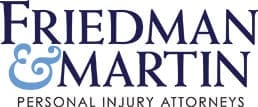Thousands of injuries occur every year in the United States due to defective or dangerous products. As a result of “product liability” law cases, millions of dollars have been awarded by juries, with over five million in 2017 alone.
Understanding product liability helps a consumer know whether or not he or she has a potential law suit. Product liability refers to a manufacturer or seller being held liable for placing a defective product into the hands of a consumer. Responsibility lies with all sellers of the product who are in the distribution chain, especially when a product defect causes injury. This includes the manufacturer, the manufacturer of component parts, the party that assembled or installed the product, the wholesaler and the retailer that ultimately sold the product to the consumer. For strict liability to occur, the sale has to occur in the business supply chain; therefore, a second-hand sale would not apply.

A typical product liability case could involve anything from a brand-new motor that backfired and injured the owner. It could be a tire that had a defect and caused an automobile accident resulting in injuries. It is possible that a children’s product resulted in injury or death. The range of possible product liability items is endless that can cause danger.
First, for product liability to occur, the product must have been sold in the marketplace. A contractual relationship has to exist between the person injured by a product and the supplier of the product in order for the injured person to recover damages. This is known as “privity of contract.” Furthermore, it is up to the attorneys to prove the manufacturer of the product had a design flaw or a manufacturing defect. Another possibility might be that the assembler at the manufacturing plant failed to provide adequate warning of risk or hazard associated with the product or failed to provide adequate directions for the product’s use.
Product liability claims are based on state laws and fall under the theories of negligence, strict liability or breach of warranty. Historically, each state has had a set of commercial statues that are modeled on the Uniform Commercial Code included in the warranty rules affecting the product liability. For example, a defective tire can cause an automobile to hit another automobile and injure the people inside. They would be entitled to file a claim against the tire manufacturer, even though they did not purchase the tires themselves. The product just has to be sold to someone. Other types of claims could be that a seat belt failed to engage, design of an automobile, a defective drug that has been recalled, a defective tool that a person uses, all of which have great potential to cause significant injury and/or death.
There are three main types of product defects:
-
Design Defects – these would be present in the initial concept before manufacturing
-
Manufacturing Defects – these occur in the course of manufacturing or assembly
-
Marketing Defects – these occur when a product if promoted, to include improper labeling, insufficient instructions or inadequate safety warnings.
A common question that occurs with product liability is, “Can I have a claim even if I was not injured?” Surprisingly, the answer is “maybe.” The plaintiff has to have suffered a legally compensable injury that does not necessarily have to be physical in nature. The plaintiff’s attorney would need to be able to prove their client deserves compensation for damages due to someone else’s negligence. One area that could be proven is financial damages when a product is unreasonably dangerous and caused fiscal harm.
There is another doctrine called “res ipsa loquitur,” that shifts the burden of proof in some product liability cases over to the defendant(s). Here, would the defect in question exist unless someone was negligent? If the doctrine is invoked successfully, the plaintiff is no longer required to prove how the defendant was negligent. On the other hand, the defendant is required to prove that it was not negligent. With “strict liability,” the plaintiff does not need to prove that a manufacturer was negligent, but only that the product was defective. By taking out the manufacturer being at fault, the concept of no-fault allows the plaintiff to recover where they might otherwise not be entitled.
What should you do if you have been injured by a product?
- Keep the evidence. It is important to show the product’s condition without disturbance.
- Make a note of the manufacturer, model and serial number.
- Keep purchase receipts and packaging instructions.
- Take a picture of the site and injury when it occurs or as soon after as possible.
- Record as many details of the incident as possible, including when, under what circumstances, who was present, etc.
- Keep good medical records to include physician visits or hospital treatments.
- Any other pertinent information related to the product and the injury you feel might prove helpful in establishing liability.
Product liability law can be complex. It often requires the assistance and testimony of experts in order to establish legal fault. Each case is unique, so understanding the varying factors involved, state laws, severity of damages or injuries, as well as the type and extent of the defect (including recalls and other information by the manufacturer) along with the history of the product is needed. Hiring an experienced attorney that has handled products liability cases is necessary in order to ensure proper compensation due to negligence.
Contact Friedman & Martin if you or a loved one has suffered an injury caused by a potentially defective product. Give us a call for a free consultation at 912-232-8500 or use our FREE Case Evaluation form.
